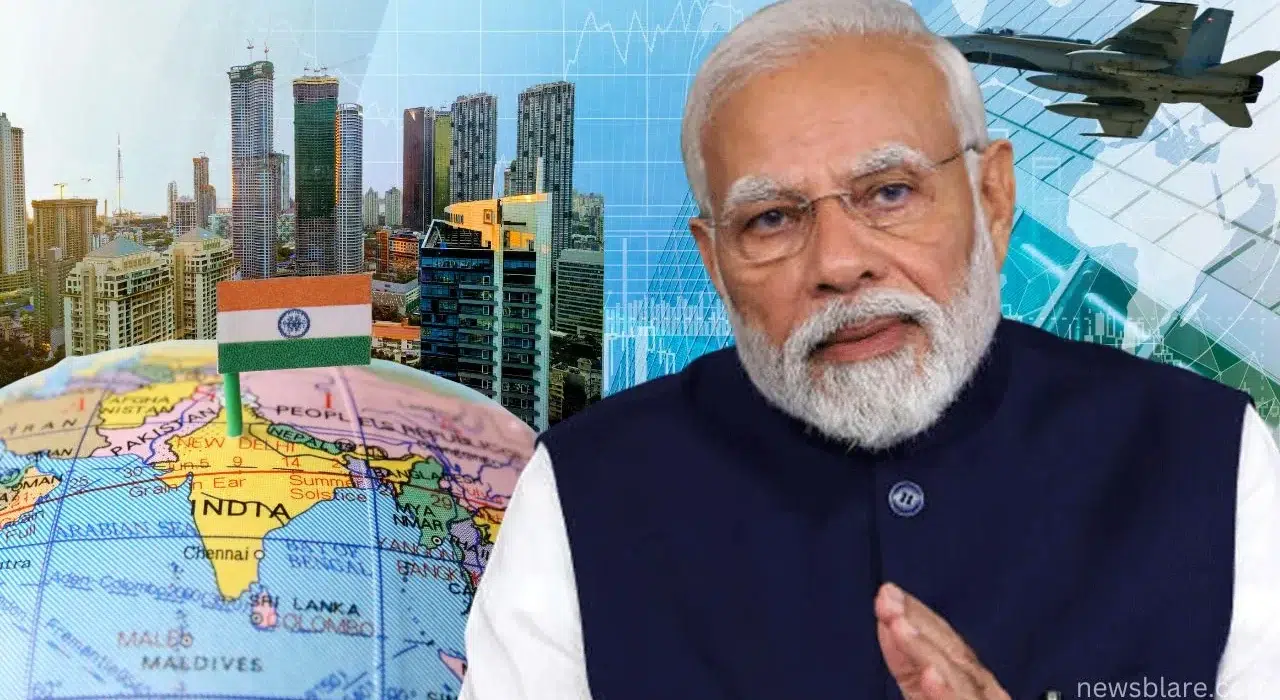Just a decade ago, India was categorised as 10th largest economy in the world. That being said, now India has clocked ~$4.11 trillion GDP and plans to become 3rd largest country by 2030. There are several growth enablers which are expected to support the country’s strong economic stability.
India becoming a global economic powerhouse should stem from numerous pillars. Critical areas include infrastructure, digital adoption, higher middle-income & progressive reforms, etc.
Over the past few decades, the country emerged as a prominent player if we consider global economic landscape. Country has captivated focus of investors, policymakers, and businesses.
Growth story of the country remains a testament to its resilience, innovation, and stable economic reforms. Tagged as 5th largest economy, it grew at one of the highest rates in the list of major economies in FY22-23, touching ~7.2%, as per World Bank’s most recent India Development Update (IDU).
India’s Growth Story
As per the report by Confederation of Indian Industry, over past couple years, country was able to implement series of economic reforms. These reforms were targeted at liberalizing numerous sectors, further helping ease of doing business and attracting foreign investment.
Reforms like Goods and Services Tax (GST) and Insolvency and Bankruptcy Code (IBC) streamlined a range of processes. This has enhanced overall business environment.
In previous decade, India exhibited impressive resilience. Its GDP was compounded at ~7% in USD terms. Economists and experts believe that India’s GDP should touch mark of $5 trillion over next few years. This means that the country might surpass Japan and Germany.
Such strong growth stemmed from demographic dividends, strong institutional frameworks, and improved governance. India has substantial advantages as compared to major economies. Firstly, the country has favourable demographic profile. In April 2023, it surpassed China as world’s most populous country.
India has ~43.3% of its population under the age of 25 in comparison to just ~28.5% per cent in China. Therefore, India’s population is significantly younger. Apart from this, there are increased US and EU tariffs on Chinese imports and higher rising labour costs and regulatory pressures in China. This should prompt MNC’s to focus on India.
Infrastructure Build
Since India becoming a global economic powerhouse, infrastructure sector should add to its growth ambitions. The country took numerous strides when it comes to modernising infrastructure. There has been major push in building roads, highways, railways, waterways, etc. To post a solid foundation focused on sustained growth, Indian government rolled out GatiShakti followed by National Logistics Policy. Collectively, they focus on enhancing infrastructure and building efficiencies when it comes to logistics.
Speed of road building in India saw an improvement to 27 km daily on average, from 24 km per day in previous 2 years. Minister of civil aviation mentioned that plans are there to increase number of airports from the current count of148 to 200 over upcoming 4 years.
As per Press Information Bureau, since 2014, there was ~500% increase in road transport and highway budget allocation.
Digital adoption
With India becoming a global economic powerhouse, digital adoption is expected to grow multi-fold.
As per DataReportal, digital adoption in India has grown by leaps and bounds, with ~751.5 million internet users in India at 2024 start, and internet penetration coming at ~52.4%. The country was home to ~462.0 million social media users in January 2024. This equates to ~32.2% of total population.
Talking about internet banking and mobile banking, the transactions worth INR 91.24 lakh crore and INR 28.16 lakh crore, respectively, were done in Jan 2024. Per 2022 data, India makes up for ~46% of the world’s digital transactions. RBI Governor informed that share of UPI in digital payments was close to ~80% in 2023.
Rising consumption
Rise in middle income group and favourable consumption patterns should help India becoming a global economic powerhouse. As per People Research on India’s Consumer Economy (PRICE), size of India’s middle class is expected to double to ~61% to its total population by the year 2047 from current 31% in 2020-21.
As per Statista, the total consumer spending in India should reach US$2.50 trillion in 2024. Indian economy should emerge as world’s third largest consumer market by the year 2026.
Policies supporting economic growth
Indian government finally made the country lucrative investment destination as a result of progressive reforms undertaken. One primary indicator remains Ease of Doing Business. There was a significant rise of 79 ranks, from 142 to 63 in 2020. This was released in World Bank’s Doing Business Report.
Strong domestic demand related to consumption and investment and Government’s emphasis on capital expenditure are the key policies helping overall growth. As per the IMF, India’s contribution to global growth should increase by 200 basis points over next 5 years.
Read Also: Dell Fired 12500 Employees, 10% of its Workforce During AI Shift

2 Comments